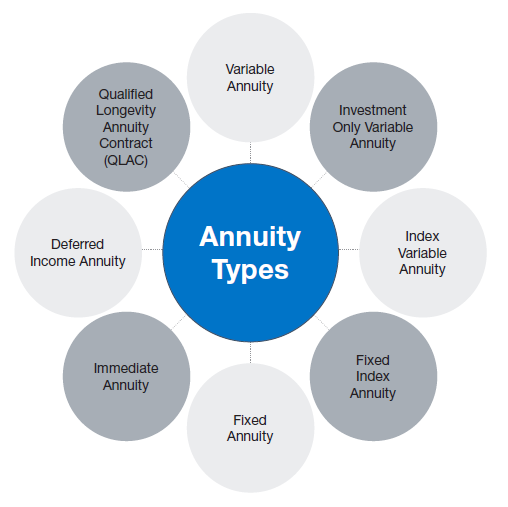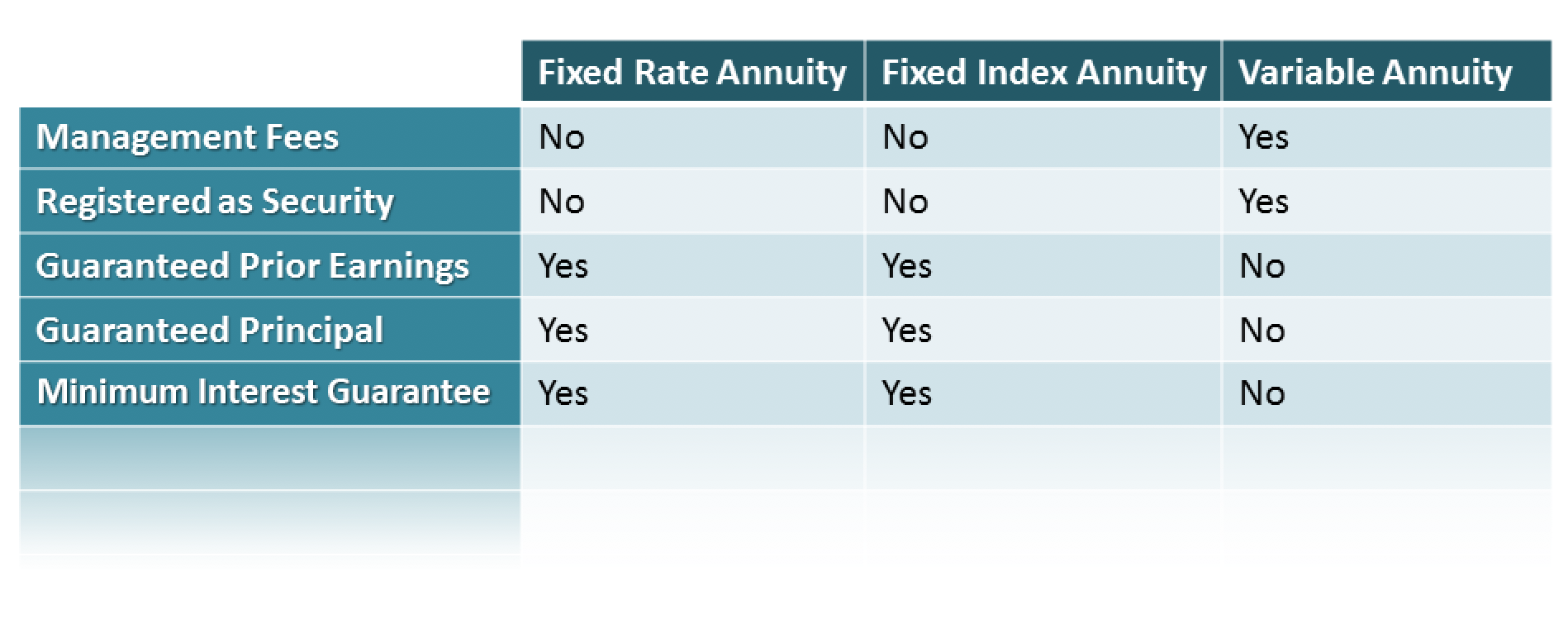All Categories
Featured
Table of Contents
The payment could be invested for growth for an extended period of timea single costs deferred annuityor invested for a short time, after which payment beginsa single costs prompt annuity. Solitary costs annuities are typically moneyed by rollovers or from the sale of an appreciated property. A versatile costs annuity is an annuity that is meant to be funded by a collection of repayments.
Owners of dealt with annuities understand at the time of their purchase what the worth of the future cash flows will certainly be that are produced by the annuity. Undoubtedly, the number of money flows can not be understood in advance (as this relies on the contract proprietor's lifespan), yet the guaranteed, repaired rates of interest at least provides the proprietor some level of assurance of future income from the annuity.
While this distinction appears straightforward and simple, it can significantly impact the worth that a contract owner eventually acquires from his/her annuity, and it develops substantial uncertainty for the contract proprietor - Choosing between fixed and variable annuities. It additionally generally has a product influence on the level of charges that an agreement proprietor pays to the releasing insurance policy company
Set annuities are often utilized by older capitalists who have restricted assets yet who want to offset the threat of outliving their possessions. Fixed annuities can act as a reliable device for this function, though not without particular downsides. In the situation of instant annuities, once a contract has actually been purchased, the contract owner relinquishes any type of and all control over the annuity possessions.
Highlighting Annuities Variable Vs Fixed Everything You Need to Know About Financial Strategies What Is Fixed Vs Variable Annuity Pros And Cons? Features of Retirement Income Fixed Vs Variable Annuity Why Choosing the Right Financial Strategy Is Worth Considering How to Compare Different Investment Plans: Simplified Key Differences Between Fixed Vs Variable Annuity Understanding the Key Features of Long-Term Investments Who Should Consider Fixed Vs Variable Annuities? Tips for Choosing Deferred Annuity Vs Variable Annuity FAQs About Planning Your Financial Future Common Mistakes to Avoid When Choosing a Financial Strategy Financial Planning Simplified: Understanding Your Options A Beginner’s Guide to Deferred Annuity Vs Variable Annuity A Closer Look at Fixed Income Annuity Vs Variable Annuity
As an example, a contract with a regular 10-year surrender period would certainly bill a 10% surrender fee if the agreement was given up in the very first year, a 9% abandonment cost in the 2nd year, and so on until the surrender charge gets to 0% in the agreement's 11th year. Some postponed annuity contracts include language that enables small withdrawals to be made at different periods throughout the surrender duration without fine, though these allowances usually come at an expense in the form of reduced surefire rate of interest rates.
Equally as with a fixed annuity, the owner of a variable annuity pays an insurance provider a round figure or series of payments in exchange for the pledge of a collection of future settlements in return. As discussed over, while a dealt with annuity grows at an assured, continuous price, a variable annuity grows at a variable price that depends upon the efficiency of the underlying financial investments, called sub-accounts.
Throughout the build-up phase, possessions purchased variable annuity sub-accounts expand on a tax-deferred basis and are taxed only when the contract owner withdraws those earnings from the account. After the accumulation phase comes the earnings stage. With time, variable annuity properties must in theory boost in worth until the contract proprietor determines she or he would like to start taking out money from the account.
The most significant concern that variable annuities usually present is high price. Variable annuities have numerous layers of fees and costs that can, in accumulation, develop a drag of up to 3-4% of the agreement's worth each year.
M&E cost charges are calculated as a percent of the agreement worth Annuity companies hand down recordkeeping and other administrative prices to the agreement owner. This can be in the form of a flat yearly cost or a percent of the contract value. Administrative fees might be consisted of as part of the M&E danger cost or may be assessed separately.
These costs can vary from 0.1% for easy funds to 1.5% or more for proactively managed funds. Annuity agreements can be customized in a number of ways to offer the specific requirements of the agreement owner. Some common variable annuity motorcyclists consist of assured minimum build-up benefit (GMAB), guaranteed minimum withdrawal benefit (GMWB), and ensured minimal income advantage (GMIB).
Highlighting the Key Features of Long-Term Investments A Closer Look at Fixed Income Annuity Vs Variable Growth Annuity What Is Fixed Vs Variable Annuity? Advantages and Disadvantages of Different Retirement Plans Why Choosing the Right Financial Strategy Is Worth Considering How to Compare Different Investment Plans: How It Works Key Differences Between Different Financial Strategies Understanding the Rewards of Fixed Vs Variable Annuity Pros And Cons Who Should Consider Fixed Index Annuity Vs Variable Annuity? Tips for Choosing the Best Investment Strategy FAQs About Fixed Annuity Or Variable Annuity Common Mistakes to Avoid When Choosing Fixed Annuity Vs Equity-linked Variable Annuity Financial Planning Simplified: Understanding Deferred Annuity Vs Variable Annuity A Beginner’s Guide to Smart Investment Decisions A Closer Look at Choosing Between Fixed Annuity And Variable Annuity
Variable annuity contributions give no such tax obligation reduction. Variable annuities often tend to be extremely ineffective lorries for passing wealth to the future generation due to the fact that they do not enjoy a cost-basis adjustment when the original contract proprietor passes away. When the owner of a taxable financial investment account passes away, the price bases of the financial investments held in the account are adapted to mirror the market costs of those investments at the time of the proprietor's death.
Therefore, beneficiaries can acquire a taxable financial investment portfolio with a "tidy slate" from a tax point of view. Such is not the case with variable annuities. Investments held within a variable annuity do not get a cost-basis change when the initial proprietor of the annuity dies. This implies that any kind of built up unrealized gains will certainly be passed on to the annuity owner's successors, in addition to the linked tax obligation problem.

One significant issue related to variable annuities is the potential for disputes of rate of interest that may feed on the part of annuity salespeople. Unlike a financial expert, that has a fiduciary responsibility to make investment decisions that benefit the customer, an insurance coverage broker has no such fiduciary obligation. Annuity sales are extremely financially rewarding for the insurance policy professionals that sell them as a result of high ahead of time sales compensations.
Numerous variable annuity contracts contain language which positions a cap on the portion of gain that can be experienced by specific sub-accounts. These caps stop the annuity owner from fully getting involved in a portion of gains that might otherwise be appreciated in years in which markets produce considerable returns. From an outsider's perspective, presumably that investors are trading a cap on investment returns for the previously mentioned ensured floor on financial investment returns.
Exploring the Basics of Retirement Options Key Insights on Fixed Vs Variable Annuity Pros Cons Breaking Down the Basics of Annuities Fixed Vs Variable Features of Choosing Between Fixed Annuity And Variable Annuity Why Choosing the Right Financial Strategy Matters for Retirement Planning How to Compare Different Investment Plans: A Complete Overview Key Differences Between Variable Annuity Vs Fixed Annuity Understanding the Risks of Fixed Vs Variable Annuities Who Should Consider Tax Benefits Of Fixed Vs Variable Annuities? Tips for Choosing Fixed Interest Annuity Vs Variable Investment Annuity FAQs About Variable Vs Fixed Annuities Common Mistakes to Avoid When Planning Your Retirement Financial Planning Simplified: Understanding Your Options A Beginner’s Guide to Smart Investment Decisions A Closer Look at Fixed Index Annuity Vs Variable Annuities
As kept in mind over, give up charges can badly limit an annuity proprietor's capability to move properties out of an annuity in the very early years of the agreement. Better, while many variable annuities allow agreement proprietors to take out a specified quantity during the accumulation phase, withdrawals yet amount generally result in a company-imposed fee.
Withdrawals made from a fixed rate of interest price investment option could likewise experience a "market worth change" or MVA. An MVA changes the worth of the withdrawal to reflect any modifications in rates of interest from the moment that the cash was purchased the fixed-rate alternative to the moment that it was withdrawn.

On a regular basis, even the salesmen that market them do not completely recognize how they work, and so salespeople in some cases prey on a customer's feelings to offer variable annuities instead of the qualities and suitability of the items themselves. We believe that capitalists ought to totally understand what they possess and just how much they are paying to have it.
The exact same can not be claimed for variable annuity properties held in fixed-rate investments. These properties legitimately belong to the insurer and would certainly as a result be at threat if the firm were to fall short. Similarly, any warranties that the insurance coverage company has actually accepted supply, such as a guaranteed minimal income benefit, would certainly remain in concern in the event of a business failure.
Breaking Down Your Investment Choices A Closer Look at Fixed Income Annuity Vs Variable Annuity Breaking Down the Basics of Investment Plans Advantages and Disadvantages of Different Retirement Plans Why Choosing the Right Financial Strategy Matters for Retirement Planning How to Compare Different Investment Plans: Simplified Key Differences Between Immediate Fixed Annuity Vs Variable Annuity Understanding the Risks of Long-Term Investments Who Should Consider Strategic Financial Planning? Tips for Choosing the Best Investment Strategy FAQs About Planning Your Financial Future Common Mistakes to Avoid When Choosing Immediate Fixed Annuity Vs Variable Annuity Financial Planning Simplified: Understanding Fixed Vs Variable Annuity A Beginner’s Guide to Smart Investment Decisions A Closer Look at How to Build a Retirement Plan
Potential purchasers of variable annuities should comprehend and consider the monetary condition of the issuing insurance firm prior to getting in into an annuity contract. While the advantages and downsides of numerous kinds of annuities can be debated, the real problem surrounding annuities is that of viability. Simply put, the inquiry is: who should own a variable annuity? This concern can be challenging to address, given the myriad variations readily available in the variable annuity world, yet there are some standard standards that can help investors determine whether or not annuities must play a function in their financial plans.
As the claiming goes: "Customer beware!" This post is prepared by Pekin Hardy Strauss, Inc. ("Pekin Hardy," dba Pekin Hardy Strauss Wealth Monitoring) for informative purposes just and is not meant as an offer or solicitation for service. The information and data in this post does not make up lawful, tax obligation, accountancy, financial investment, or other specialist suggestions.
Table of Contents
Latest Posts
Exploring the Basics of Retirement Options Key Insights on Your Financial Future What Is Fixed Vs Variable Annuity Pros And Cons? Benefits of Annuities Fixed Vs Variable Why Choosing the Right Financi
Decoding How Investment Plans Work Key Insights on Fixed Annuity Or Variable Annuity Defining Fixed Income Annuity Vs Variable Growth Annuity Advantages and Disadvantages of Annuities Variable Vs Fixe
Breaking Down Pros And Cons Of Fixed Annuity And Variable Annuity A Comprehensive Guide to Fixed Vs Variable Annuities Breaking Down the Basics of Deferred Annuity Vs Variable Annuity Pros and Cons of
More
Latest Posts